Dry skin can cause a lot of trouble for its owner. Peeling, tightness and earlier appearance of the first wrinkles are just a short list of what the owner of this skin type faces. If the skin on your face is dry, you should definitely think about choosing special treatment care and familiarize yourself with traditional methods of solving the problem.
Skin types and their differences
Everyone knows that there are three main skin types - oily, normal and dry. Each of them has its own advantages and disadvantages: at a certain period of life, skin can both please and sadden its owner.
One of the most striking criteria by which dry skin can be distinguished from normal skin is a frequent feeling of tightness, which appears especially clearly after washing even with plain water, not to mention washing with cleansing products (soap, makeup remover milk, etc.) . The second criterion is a fine-porous structure (while in oily and normal skin the pores are often noticeable or even enlarged, then in dry skin they are not visible).
At a young age, those with dry skin are happy: it is problem-free, people with this skin type do not have acne or pimples. However, already from the age of 27-28, facial wrinkles begin to form on dry skin. Those with normal skin usually develop facial wrinkles by the age of 34-36. Dry skin is more prone to early aging and wrinkles, especially if it is not moisturized and cared for properly.
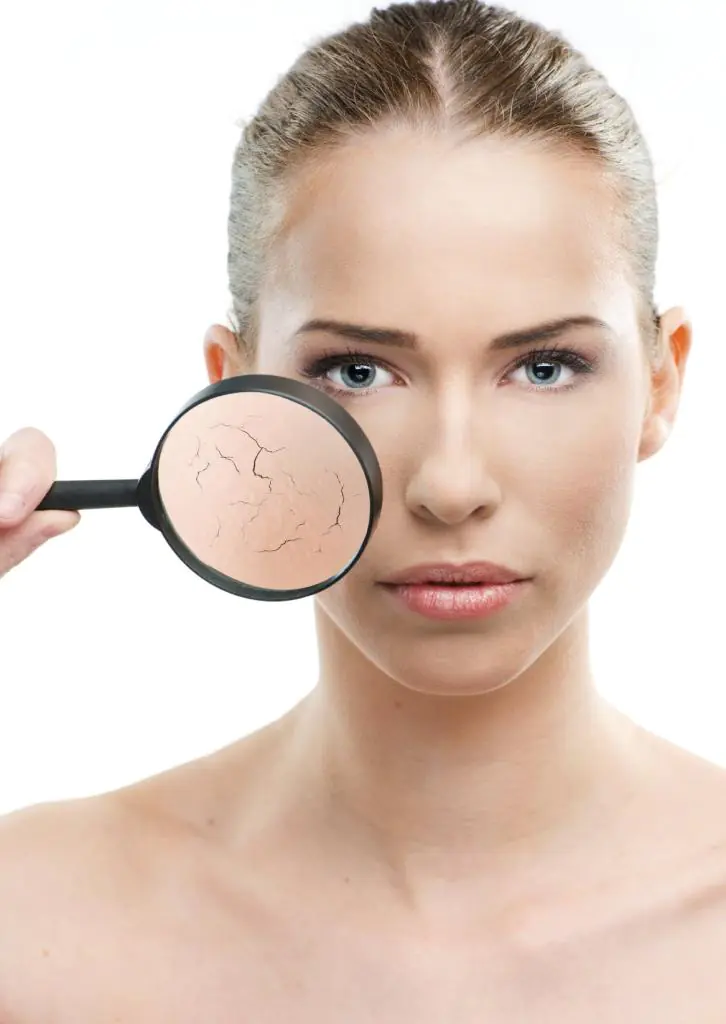
How to distinguish dry skin from normal skin
It is very easy to distinguish dry skin from normal skin; just do a simple test. If, when pressing on the surface of the face, fingerprints do not disappear immediately, then the skin is dry.
Why can skin be normal in youth, but become dry with age? This can happen due to a violation of lipid (fat) and water metabolism, disruption of the functioning of the sebaceous glands in the epidermis, and a violation of the acid-base state of the skin surface. If the skin on your face and hands, as well as other parts of the body, dries and peels, you should get tested for hormone balance. Dry and itchy skin over a large area of the body can be a sign of serious health problems.
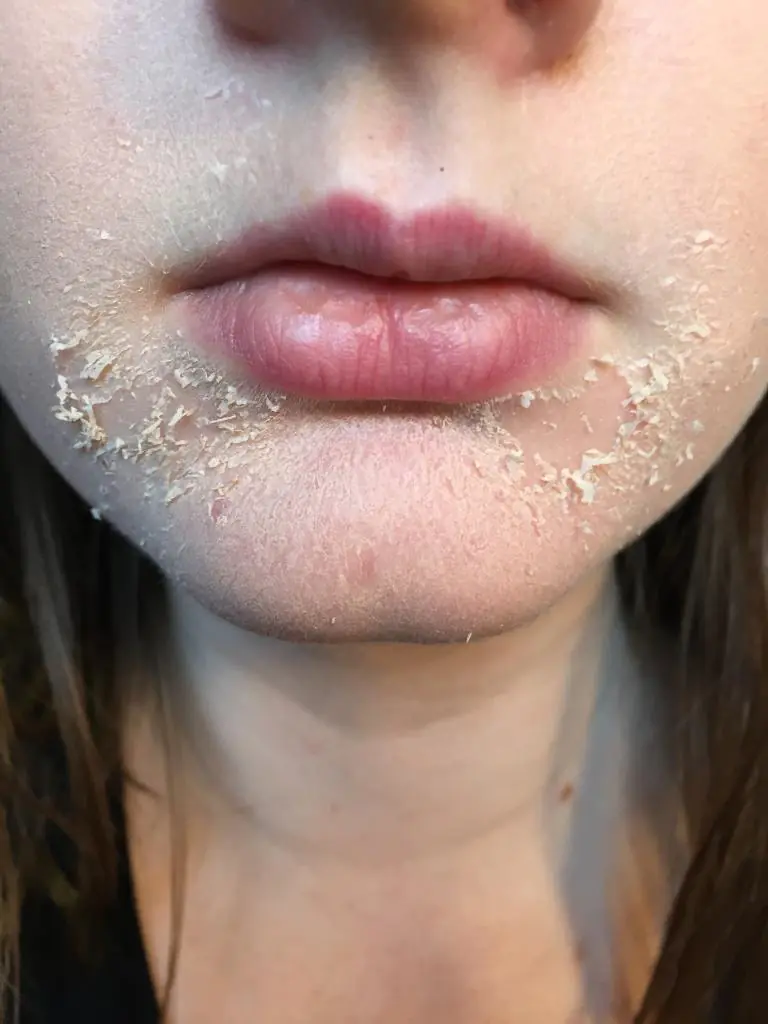
Why does our skin need water?
For a decent appearance of the skin, a sufficient level of hydration is necessary, that is, full of moisture. This parameter largely depends on nutrition and lifestyle. And if it is insufficient, then the skin of the face and body becomes painfully dry and peeling appears. Some dermatologists argue that the earlier appearance of rosacea is characteristic of dry skin. With insufficient and irregular hydration, the skin becomes thin, dry, easily injured, and the first expression wrinkles appear.
The degree of skin hydration from the inside depends on two factors that affect moisture exchange with the environment. This is the amount of sebum produced and the condition of the stratum corneum of the epidermis. They not only support the protective functions of the skin, but are also responsible for maintaining normal levels of moisture retention in cells. These two factors are closely related to lifestyle, health status, presence of chronic diseases, etc.
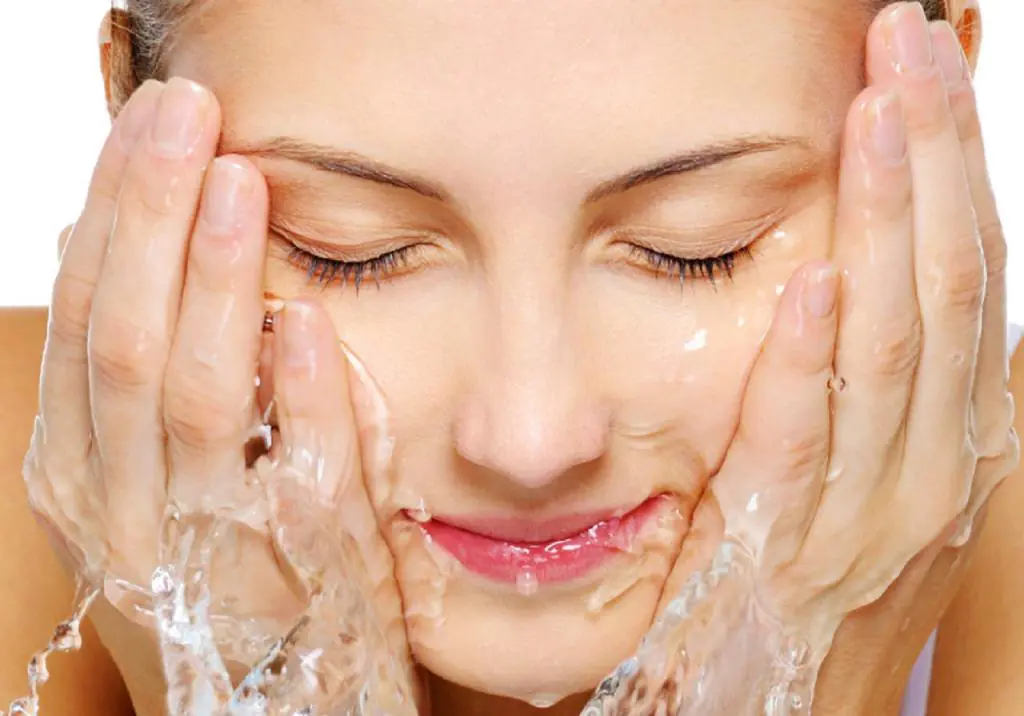
Common Causes of Dry Skin
Often women turn to cosmetologists and dermatologists with complaints that the skin on their face is dry. The causes of this pathology are as follows:
- Exposure to sunlight (ultraviolet radiation) is detrimental to the upper and deep layers of the epidermis and is almost guaranteed to lead to subsequent dryness of the skin on both the face and body.
- Frost and wind in winter and autumn also lead to deterioration of the skin and its dehydration. Why does the skin on the face peel in winter and what to do in this case? The fact is that inside each pore its own moisture freezes - hence the peeling. Moreover, you should not use moisturizers before going out into the cold. This causes the skin on your face to dry out even more.
- Central heating in apartments and offices, as well as running radiators, make the air dry, resulting in a feeling of tightness and flaking. If the skin on your face dries out, you should ventilate the room and stop using radiators.
- Unfavorable ecology - exhaust gases and industrial poisons in the air negatively affect the condition of the epidermis.
- Improper skin care, abuse of acid peels, use of overly aggressive compositions when washing, use of lotions and tonics containing alcohol.
- Bad habits: alcohol abuse and smoking cause blood vessels to deteriorate, and the skin becomes fragile, thin and lean.
- Hormonal imbalances and some chronic diseases can cause skin problems on the face.
- Hot baths, frequent stays in saunas and steam baths can also contribute to the appearance of characteristic symptoms.
The reasons why the skin on your face dries out may vary depending on your lifestyle and individual health characteristics. If, for example, the reason is a hormonal imbalance, then traditional methods of treatment and even pharmaceutical products may be powerless.
The appearance of early wrinkles and dry skin
Alas, dryness and flaking of the skin are closely related to the appearance of early expression lines. If the skin on your face dries out, you should get treatment as quickly as possible and find out the exact cause of the pathology.
Some girls, already under the age of 30, begin to visit a cosmetologist's office: get injections of fillers with hyaluronic acid, mesotherapy, and “tweak” their eyebrows with Botox. Of course, all these measures will help prevent the appearance of early wrinkles. But if the reason is dry skin, then it is much easier and much cheaper to simply moisturize it properly. Finding the right skin care routine for dry skin can save the owner a lot of money.
Which doctor should I contact?
First of all, you need to undergo a standard examination by a therapist and endocrinologist, take tests and make sure that there are no chronic diseases and that hormonal levels are normal. Often very young girls come to the dermatologist with the question “What should I do, the skin on my face is peeling?” The reasons why young girls have dry skin most often lie in changes in hormonal levels, which are actively restructured up to the age of twenty. In this case, it is usually easy to choose competent pharmacy care; after a few years, the hormonal levels will stabilize and the problem with the skin type will disappear by itself.
If everything is fine with your health, a woman regularly uses masks for dry skin, but there is no result, she should seek help from a dermatologist. As a result, the doctor will give advice on skin care and prescribe suitable pharmaceutical care.
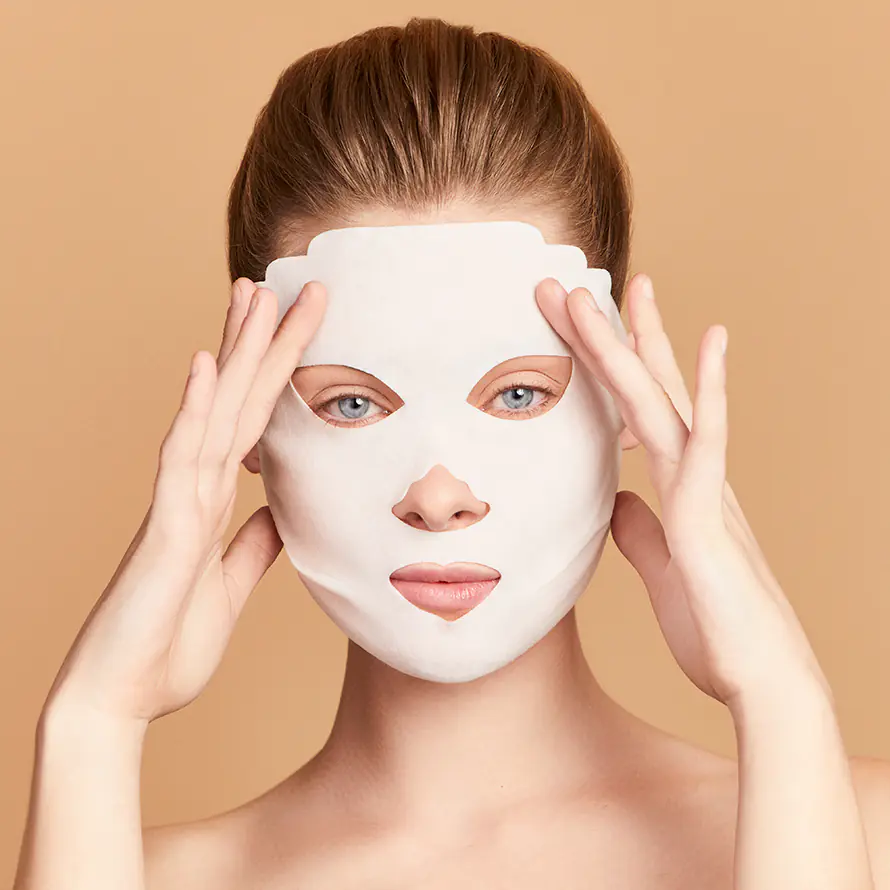
Treating dry facial skin at home
The causes of the problem may be different, but the use of masks with moisturizing components will help at least temporarily alleviate the condition of the epidermis. Masks for dry skin make it moisturized for a while and help get rid of tightness and flaking. Of course, the main cause of peeling skin on the face should be eradicated, but masks can make life much easier for those with dry skin.
The following ingredients are used for moisturizing masks:
- egg yolk;
- linseed, olive oils;
- fresh cucumbers or their juice;
- fresh carrot juice;
- full-fat sour cream, heavy cream.
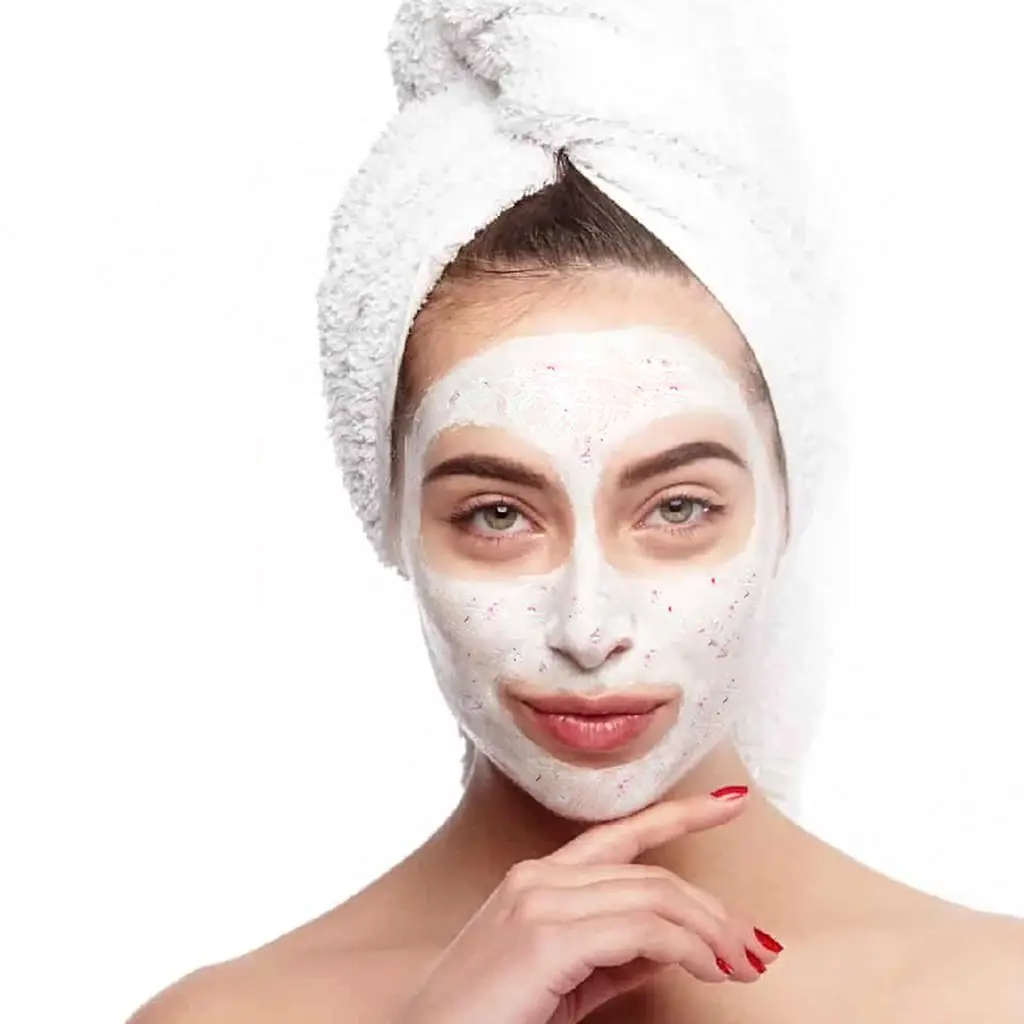
Vitamin deficiency on the face: what vitamins does your skin lack?
If the problem of dry skin is acute, you should choose a vitamin-mineral complex, which includes all B vitamins, carotene, and the mineral zinc. This:
- "Perfectil";
- "Alphabet-Cosmetic";
- brewer's yeast "Evisent".
Also, the diet must contain a sufficient amount of protein and amino acids, otherwise the body will lack the most important components for building beautiful skin. Collagen and keratin are synthesized precisely from proteins supplied with protein foods. The diet should also contain enough healthy fatty acids.
Egg yolk for dry skin
If the skin on your face is very dry, it is advisable to regularly make a simple mask, which will make the epidermis moisturized and nourished for a while. To prepare it you will need the following ingredients:
- the yolk of one raw chicken egg;
- a teaspoon of olive or flaxseed oil;
- a few drops of cucumber juice.
If you don’t have fresh cucumbers, no problem, you can get by with just two ingredients. You should mix them to a homogeneous consistency and apply to the entire face and neck, excluding the area around the eyes (you can apply just the oil in a thin layer). Leave the mask on for 10-15 minutes, rinse with warm water. This is one of the most popular folk recipes. What to do if the skin on your face is peeling, but there are no ingredients for this mask? Then you can try making a mask from sour cream, cream, cosmetic oils, etc.
Ice cube wash for dry skin
This recipe is quite controversial, and in some ways even dangerous. If the vessels are thin, then it is better to never wipe the skin with ice: this can provoke the appearance of rosacea. But if there is no predisposition to rosacea, then you can safely use the recipe.
Prepare a steep decoction of chamomile or calendula in advance. When it cools, strain and pour into ice cube trays. To freeze. Then, every morning and every evening, apply light massage movements with an ice cube over the skin of the face. The procedure does not imply pain: if the touch of ice is too painful, then it is better to abandon the procedure and try other masks.
Masks with sour cream to nourish and moisturize dry skin
This mask recipe is the simplest, but this does not mean that it is not effective. If you have fatty sour cream or cream at home, you should simply apply a thin layer of it to the skin of your face, hold for 15 minutes, and then rinse off. Fermented milk products contain healthy fats and a lot of protein, so this mask not only helps nourish and moisturize the skin, but also makes the epidermis more elastic and dense.
The result will be noticeable if you take a course of masks: apply sour cream or cream every evening for 20-25 minutes, then rinse with warm water. After the procedure, you can apply any pharmacy moisturizing or nourishing cream.
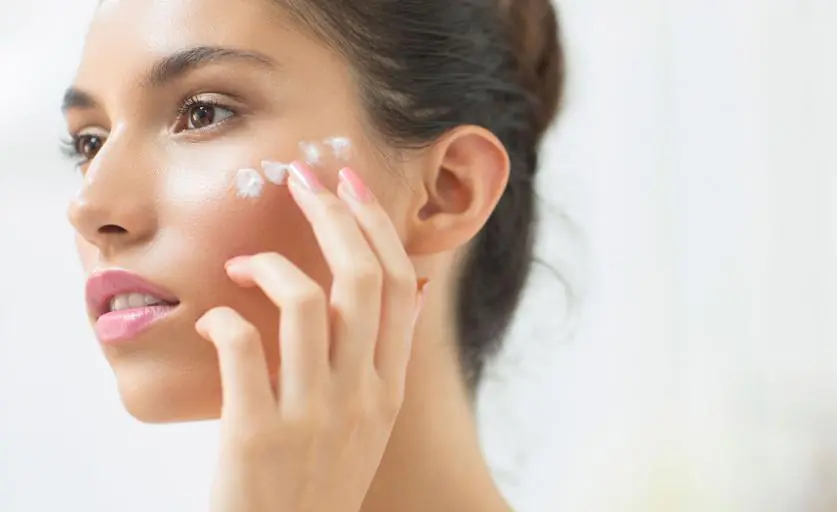
Cosmetic methods of moisturizing the skin
We cannot ignore the “gifts” of modern cosmetology. Mesotherapy, fillers with hyaluronic acid, laser mesotherapy - all these methods are not cheap, but the results are noticeable after the first procedure.
Injections with hyaluronic acid allow you to retain moisture in the deep layers of the skin due to the fact that the acid attracts water. Yes, at first after the procedure it may seem so. that the face seems to be swollen, but this, as a rule, is the result. Due to the attraction of moisture, the skin becomes dense, moisturized, and wrinkles are smoothed out.
Many girls avoid salon procedures: they believe that the skin will “get used” to hyaluronic acid and will look even worse over time. This is not true: studies have proven that the earlier you start properly nourishing your skin, the longer its fresh and blooming appearance will remain.
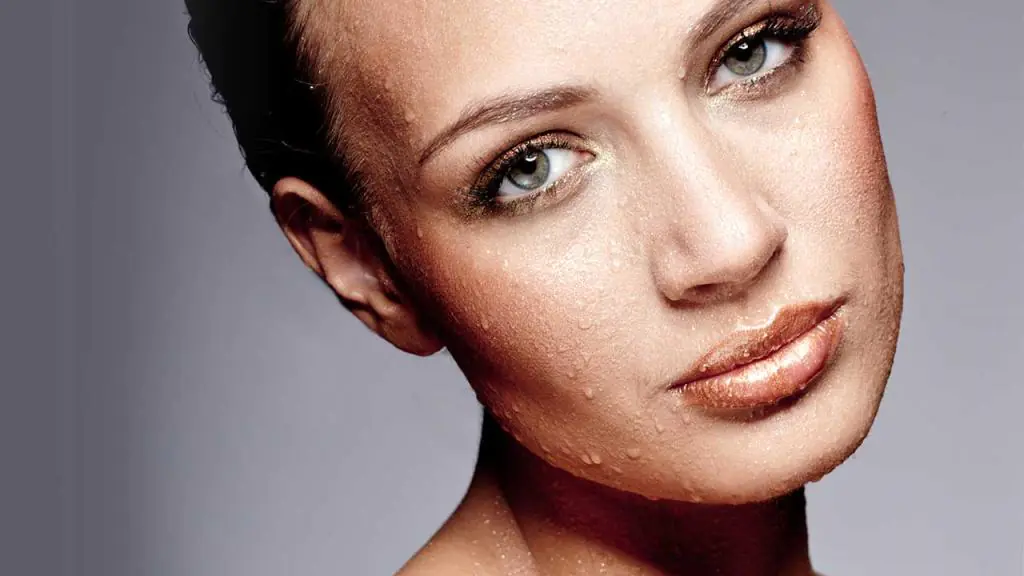
List of the best creams for dry skin
Of course, we cannot fail to mention high-quality store-bought and pharmacy creams. Here is a list of the most popular products among owners of dry and flaky skin:
- Avene. Moisturizing sunscreen Hydrance Optimale UV Rich SPF 20 is a cream from the French brand of pharmaceutical cosmetics, containing thermal water, there is also a filter protection against ultraviolet rays, so the cream is suitable for use in spring and summer, as well as during winter holidays in the mountains .
- Cream from "Librederm" with hyaluronic acid in its composition helps to retain and preserve its own moisture in the epidermis; it also contains healthy fatty acids and vitamin F.
- Pharmacy cream "D-panthenol" is effective not only after burns, it is also an excellent and cheap remedy for getting rid of peeling and tightness;
- "Trio Active Moisturizing" is a cream from L'Oreal, which, due to its constituent compounds with ceramides, tocopherol and other vitamins, can instantly relieve the feeling of tightness.
- "Atoderm" from the company "Bioderma" allows you to moisturize not only the skin of the face, but also the entire body. Among the advantages, it can be noted that the cream does not clog pores and does not contain fragrances. Disadvantages: dense texture, should not be used during the day as the skin is shiny.
The surface layer of the epidermis is constantly renewed: the stratum corneum is rejected and replaced by keratinocytes - new cells. Due to unfavorable environmental conditions: climate, allergies, fungal infection, interaction with toxic substances, lack of moisture, nutrients and vitamins, hereditary predisposition, the stratum corneum begins to be rejected intensively, while the formation of keratinocytes is also activated. As a result, peeling appears on the face - what to do and how to restore health and beauty to the skin becomes a particularly significant problem.
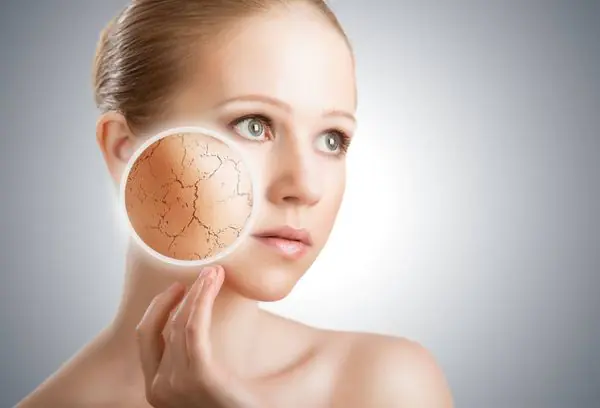
Causes of peeling skin
Sudden peeling on the face is a reason to think about it. This may be due to improper skin care or problems within the body.
- Lack of moisture. In 97% of cases, the skin begins to peel due to dehydration. Signs of a lack of fluid in the body also include thirst, dizziness, dry mouth, weakness, low blood pressure, nausea, and palpitations. Typically, such symptoms are caused by insufficient drinking, intense sweating, and the use of diuretic medications.
- Incorrect care. Peeling of the skin on the face, caused by improper care, most often occurs in people with sensitive skin types, which are characterized by an acute reaction to any external intervention.
- Incorrectly selected or low-quality cosmetics. Another reason why the skin on the face begins to peel off. This is more often observed in women, since it is the weaker sex who tend to get carried away with cosmetics.
- Unfavorable environment. These include temperature changes, exposure to direct sunlight on the skin, wind, and very dry air in office premises (especially in winter). In this case, the skin on the face peels off chronically, due to prolonged contact with the irritant, and in addition, dryness is observed. There may be mild redness, swelling, mild itching and burning, soreness, cracks, and thickening of the skin. Urticaria, rhinitis, asthma attacks, and conjunctivitis are not observed.
- Allergy. Redness and peeling can be caused by animal hair, pollen from flowering plants, and some medications. Problems with the skin stop if the irritant is removed.
- Diathesis. It develops as an allergic reaction, although experts do not consider it an allergy. Signs of diathesis can vary greatly, but in most cases there is dryness and swelling, the skin turns red, itches, and flakes. Particular discomfort is felt at night. Sometimes vesicles and papules appear on the face. Diathesis can be contact (for example, with local use of inappropriate or low-quality cosmetics, ointments) and atopic, which is a manifestation of an allergy to something (wool, pollen, some products).
- Avitaminosis. Peeling on the face may be due to insufficient intake of vitamins and minerals from food. As a rule, a lack of vitamins A and group B affects the condition of the skin in a similar way.
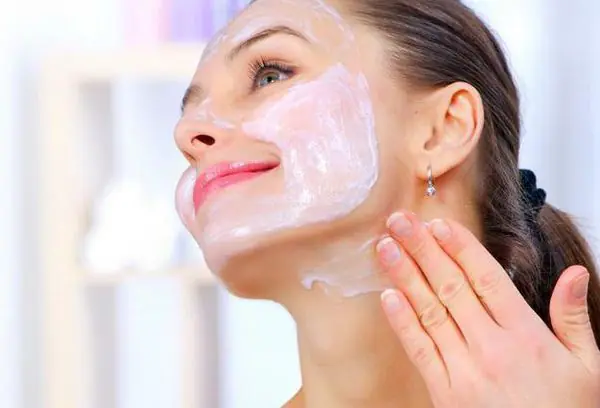
Insufficient consumption of keratin (vitamin A) is also manifested by night blindness, inflammation of the cornea and eye mucosa, bronchitis, urethritis and inflammatory processes in the intestinal mucosa.
With a lack of vitamin B2, the mucous membranes of the eyes, the skin between the nose and upper lip, and on the eyelids become inflamed, ulcers appear in the corners of the mouth, cracks on the lips, muscle weakness, and anemia.
Vitamin B3 deficiency is manifested by general weakness, diarrhea, paralysis, in addition, hair loss, tongue inflammation, hallucinations, delirium, and insomnia are possible.
A lack of vitamin B6 is characterized by the development of fungal inflammations on the skin, anemia, insomnia, irritability, weakness and inflammatory processes on the mucous membranes.
Drowsiness, malaise, muscle pain, depression, increased fatigue and decreased blood pressure are characteristic signs of vitamin B7 deficiency.
Peeling of facial skin can also be associated with certain diseases:
- Ichthyosis. Signs of the disease are very dry, rough and rough skin due to a significant increase in the number of horn cells. Most often, due to ichthyosis, the skin on the face peels off in young children (1-4 years) and adolescents.
- Seborrheic dermatitis. The disease manifests itself in the form of itching, redness and flaking of the skin, affecting exclusively areas with a large number of sebaceous glands and hair. Develops as a result of decreased immunity, heavy sweating, stress, poor hygiene, alcohol consumption, and an unbalanced diet.
- Psoriasis. Red-pink spots in psoriasis flake and itch, rarely appear on the face (they can be seen on the forehead, temples, neck), more often they are localized on the body. Psoriasis is characterized by periods of remission and exacerbation. The disease is provoked by drinking alcohol, hypothermia, prolonged exposure to sunlight, stress, and taking medications.
In what cases is it necessary to consult a doctor?
If the skin on your face is peeling, this is not always a consequence of dehydration and a harmless lack of vitamins. In some cases, such skin problems indicate diseases that may worsen over time.

Signs that you need to see a doctor:
- dry, flaky skin that itches a lot and has a burning sensation;
- erosions, spots, ulcers, ulcers, cracks appeared on the face;
- peeling is accompanied by dizziness, diarrhea, joint pain, headache, hallucinations, insomnia, paralysis;
- flaky spots differ from the rest of the skin in color;
- the skin is bright red and swollen;
- the skin peels in the nasolabial folds, on the eyebrows, around the eyelashes, on the head.
How to get rid of peeling
Peeling skin on the face can be treated, and creams containing no more than 0.5% hydrocortisone will be especially effective. Apply the product once a day to problem areas for 14 days. It is prohibited to use such creams for a longer period of time, since these are not ordinary cosmetics, but medicine.
What to do if the peeling is very strong and ordinary moisturizing creams cannot cope with it? In this case, the use of drugs that contain dexapanthenol is effective. These are, for example, “Panthenol” in the form of a cream or spray, prescribed by doctors for burns, “Bepanten” (can be used as a means of preventing peeling in winter).

If peeling and irritation on the skin is not caused by an illness, then dealing with them on your own will not be difficult. You need to act according to the following scheme:
- remove dead cells from the surface using a scrub (it should be soft, without abrasive particles that can injure the skin);
Advice
You can make an excellent scrub with your own hands. Pour boiling water over oatmeal and leave for 20 minutes, add egg white and apply to face. Massage for 2-3 minutes, then rinse. You can use coffee grounds, fresh apple and cucumber slices, and watermelon pulp as a scrub.
- make a nourishing mask, it can be purchased or made from products that are always on hand (sour cream, cottage cheese, egg yolks, cream, boiled potatoes fight peeling);
- leave the mask on for 20 minutes, then rinse with water;
- Lubricate your skin with moisturizer.
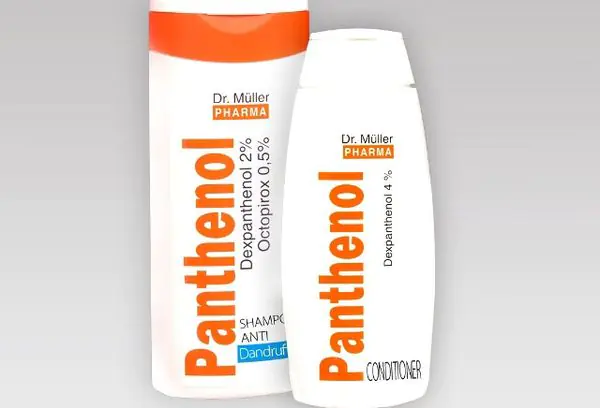
Anti-flaking masks
In winter, masks are a must. Particularly useful are compositions with yolk, vitamins, cottage cheese, cream:
- mix 0.5 tablespoon of honey with 2 yolks and 0.5 tablespoon of vegetable oil, spread on the face every 5 minutes (no need to wash off the previous layer), leave for 20 minutes and rinse with a cotton pad soaked in a decoction of linden flowers;
- lightly heat vegetable oil (olive, wheat germ, almond or flaxseed) and lubricate your face with it, after 30 minutes rinse with warm water;
- mix the egg yolk with 1 teaspoon of chopped oatmeal and 1 tbsp. spoon of vegetable oil, apply to face and rinse after 15 minutes with warm water;
- Take cottage cheese, cream, milk and sour cream in equal parts, mix and apply to your face, after 15 minutes wash with warm water.
A balanced diet will help you overcome peeling and irritation on the skin. The table must have fresh vegetables and fruits, seafood, fish, dairy products, and nuts. In autumn, winter and spring, it is advisable to take special vitamin and mineral complexes.
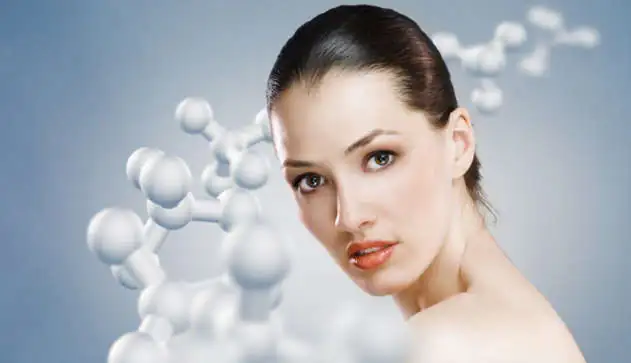

PhotoElf Magazine "Facial skin care» presents to you a publication from the book by A. Margolin, E. Hernandez. “New cosmetology”, where the question is covered in detail: why the skin on the face dries, a violation of the barrier properties of the skin, the causes of dry epidermis.

Why does the skin on my face dry out? Is this a disease or a symptom?
Dry skin is not a disease, but a symptom. We hear complaints about very dry skin quite often. The basis for such complaints may be skin tightness, roughness, and painful microcracks that occur after washing. It would seem that there is nothing simpler - just apply a moisturizer to the skin, and the problem is solved!
A trip to a cosmetic store instills both optimism (we have batteries of humidifiers of various cosmetic forms, brands and prices at our service) and a feeling of confusion (what to choose?). Why does the skin on my face dry out? You have probably encountered cases (if not personally, then heard from friends or clients) when, after a week of using an expensive “super-moisturizing” product from an elite brand, the skin became even drier, while a modest cream with Vaseline provided real help.
“Bad cosmetics,” the disappointed buyer renders a verdict and in the future tries to avoid not only this brand, but also the store where he made his valuable purchase.
In practice, choosing a moisturizer is almost always problematic. Before we get started, let's define what we mean when we talk about dry skin.
It turns out it's not that simple. Dry skin is a common complaint among those who have a lack of sebum. At the same time, there are often people who, on the contrary, have increased activity of the sebaceous glands and visibly oily skin. At the same time, they also find their skin dry and suffer from the discomfort associated with this condition.
So, starting to consider one of the most common and most controversial problems in cosmetology under the general name “why the skin on the face dries,” let us understand that dry skin is not a disease, but a symptom. More precisely, a complex of symptoms (roughness, decreased plasticity, microcracks, a feeling of tightness, fine wrinkles, irritation, increased sensitivity) that develop as a result of a decrease in moisture content in the uppermost layer of the epidermis - the stratum corneum.
Why does the skin on the face dry out: violation of barrier properties
Let us recall that one of the fundamental differences between the stratum corneum and other layers of the epidermis is its relatively low water content - about 15%.
The stratum corneum (the layer in which there are no living cells) needs a small amount of water primarily in order to maintain plasticity and integrity (this distinguishes the cells of the stratum corneum from the cells of the deeper layers of the epidermis, which require moisture to live).
If for one reason or another the moisture content in the stratum corneum decreases, then its structure is disrupted, which entails a violation of the barrier properties. The latter means that the stratum corneum ceases to be an impenetrable barrier to water, and its evaporation increases.
As a result, a moisture deficiency occurs in the living layers of the skin with all the ensuing consequences - a slowdown in metabolism, the skin does not recover and heal so quickly, its appearance noticeably worsens (it becomes dull, and fine wrinkles appear over time). In addition, a broken barrier can allow microorganisms to penetrate more easily, causing irritation.
Attempts to eliminate irritation and inflammation using active substances with anti-inflammatory and antibacterial action, as a rule, do not bring results or their effect is unstable - under conditions of constant lack of moisture, the physiology of skin cells is disrupted and it becomes very difficult to “cure” them.
Therefore, before dealing with symptoms (inflammation, itching, peeling), it is necessary to restore the barrier properties of the stratum corneum and raise its moisture content to an optimal level. Why does the skin on my face dry out?
When we talk about moisturizing the skin, we actually mean moisturizing the stratum corneum. The goal of any moisturizing cosmetic procedure or product is to saturate the stratum corneum with moisture and keep it sufficiently hydrated for as long as possible.
To solve this problem effectively, you need to find out the causes of dryness. Let's talk about them in detail.
Why does the skin on your face dry out: causes of dryness
There are many reasons for this and they are all very different. These could be some kind of disease, and not necessarily skin disease. The range of pathologies is wide - it can be a hormonal imbalance (remember diabetics with their chronically dry and irritated skin), diseases of the genitourinary system, digestive problems, infectious diseases, genetic syndromes.
However, the skin of a healthy person can also become dry either due to external influences (UV radiation, strong wind, cold, dust, mechanical friction (for example, on clothing), dry climate, chemicals that destroy barrier structures), or due to an unbalanced diet.
What happens to the stratum corneum? Why does it stop holding water? Why does the skin on my face dry out? To answer these questions, we need to remember the main water-retaining structures of the stratum corneum:
1. Sebum - smoothes the horny scales, reducing the area of contact between the intercellular spaces with air (accordingly, the surface from which evaporation occurs decreases); creates an additional water-repellent layer on the surface of the skin that prevents water evaporation.
2. Lipid structures (lipid barrier) - fill the intercellular spaces of the stratum corneum and prevent the diffusion of water molecules and water-soluble substances.
3. Natural Moisturizing Factor (NMF) Ingredients
NMF is an abbreviation for the name of a class of substances located on the surface of the stratum corneum scales, whose molecules are capable of attracting and retaining moisture. NMF includes free amino acids, urea, lactic acid, sodium pyroglutamate, etc.
4. Keratin - represents large protein aggregates that fill corneocytes. It is insoluble, however, like all proteins, it swells in water and binds water molecules.
Water-retaining structures of the stratum corneum
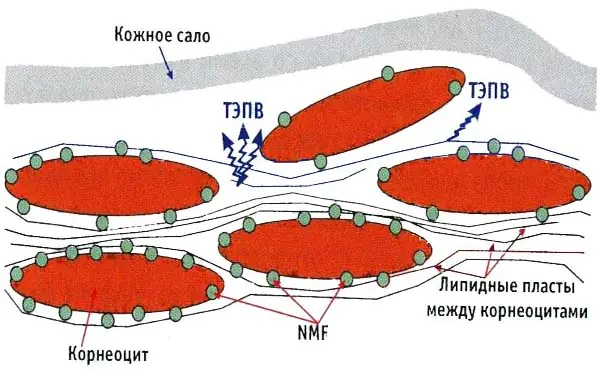
Water in the stratum corneum can be:
- Free (between lipid layers) and
- Related (NMF, keratin).
If there is a violation (deficiency, structural changes) of one or more water-retaining structures, the water level in the stratum corneum drops. Correctly selected cosmetic products can either simply reduce discomfort and temporarily improve the appearance of the skin, or even completely eliminate this problem, which raises the question: why does the skin on the face dry out?
To do this, three main strategies are used - increasing the water content in the upper layers of the skin, restoring the barrier and softening the skin with emollients.
Moisturizing masks for very dry skin
Dry skin on the face is the main indication for using a moisturizing mask. An excellent way to moisturize dry skin are the following recipes for homemade masks, selected for you by the editors of the PhotoElf magazine “Facial Skin Care”.
1. Mask with melon and cucumber
- Ripe melon - 50 gr.
- Cucumber juice - 30 ml.
- Olive oil - 5 ml.
Prepare freshly squeezed cucumber juice. Mix the chopped melon and add oil. Apply to face.
2. Moisturizing face mask with honey
Honey is an irreplaceable source of beneficial components that are so necessary for skin of any age. It promotes gentle cleansing of the skin and filling its cells with oxygen.
- Honey - 30 ml.
- Yolk - 1 pc.
- Vegetable oil - 10 ml.
Beat the yolk with a blender or whisk. Add a little honey heated in a water bath and any vegetable oil. It is best to use olive or flaxseed oil. Gently apply the mask with a brush, wait until it dries a little and apply a second layer.
3. Purifying hydrating face mask
To not only moisturize but also combat dead skin cells, you can use potato starch. It gently cleanses the skin while retaining moisture.
- Potato starch - 15 gr.
- Yogurt - 20 ml.
- Egg white.
- Lemon juice - 5 ml.
Prepare all the ingredients and mix them so that you get a thick paste. Apply to the skin, massaging it a little with your fingertips. Leave the mixture and then rinse with warm water. By making such a mask 2-3 times a week for a month, you will forget for a long time that you once wondered why the skin on your face dries.
4. Tomato mask for deep skin hydration
Tomatoes have a unique ability not only to moisturize, but also to rejuvenate the skin. Based on this component, many expensive cosmetics have been created, the effectiveness of which can be achieved at home.
- Fresh tomatoes - 100 gr.
- Olive oil - 10 ml.
Combine the juicy pulp of tomatoes with a small amount of olive oil and apply to the skin for 10 minutes.
5. Universal moisturizing mask
If you are looking for a universal product that is optimal for any skin type and condition, we recommend using a mask based on aloe juice and rose water. Regular use of this mask will help make your skin cleaner and softer, as well as fill it with beauty and health.
- Tea rose petals - 10 pcs.
- Aloe juice - 20 ml.
- Green grapes - 50 gr.
- Lemon essential oil - 3-4 drops
First you need to prepare rose water. This is an infusion of tea rose petals. To prepare it, pour hot water over the petals and leave for an hour.
Then you need to grind the green grapes using a blender. Use the whole berries, including the skin and seeds, which have an anti-inflammatory effect, improve blood circulation and promote epidermal renewal. To prepare the mask, use freshly squeezed aloe juice. Mix the prepared ingredients. Add a little water if necessary until the mixture has the consistency of a thick paste.
Apply to pre-cleaned skin and rinse after 10 minutes. This super moisturizing mask helps fill skin cells with moisture and also normalizes water and fat metabolism in the skin.
Now you know, our dear readers, why the skin on your face dries out, as well as homemade ways to deeply moisturize your skin.



